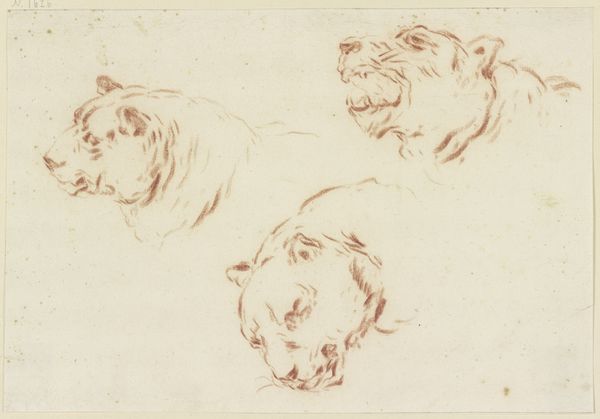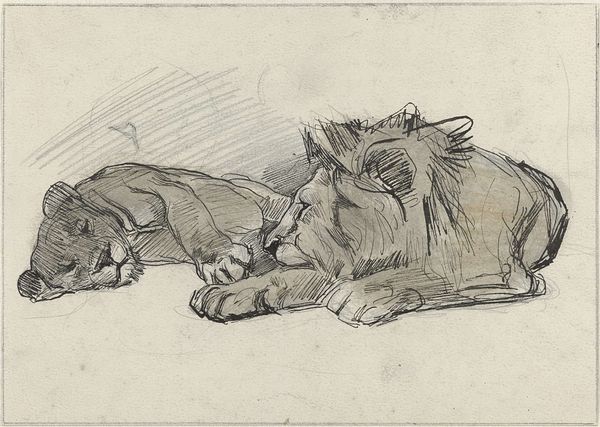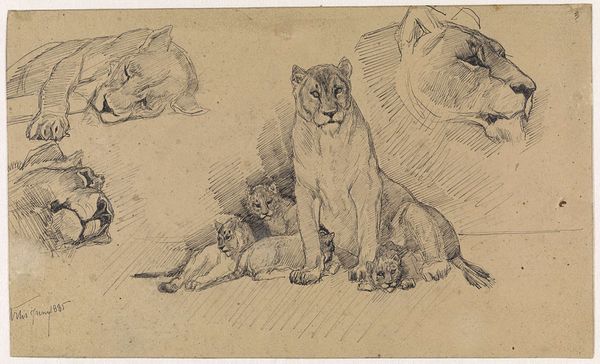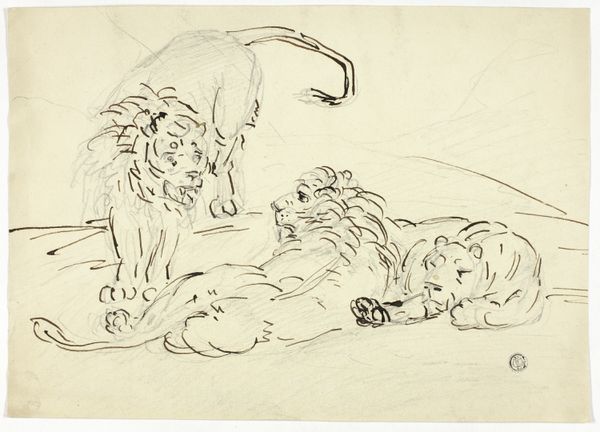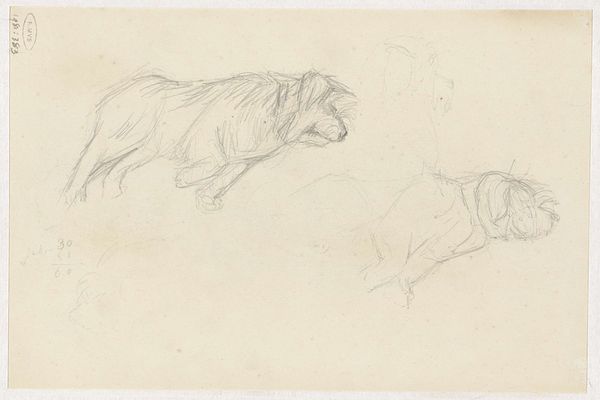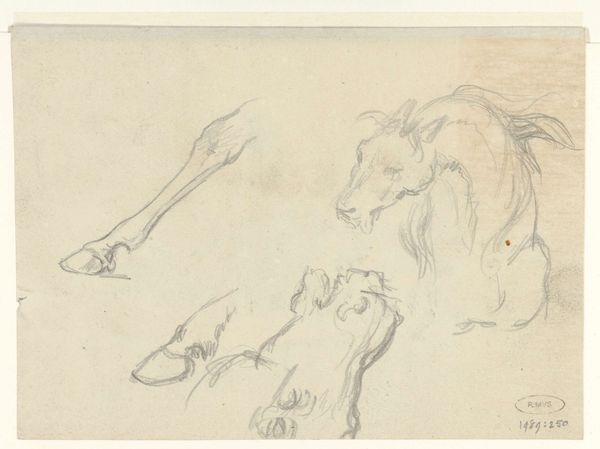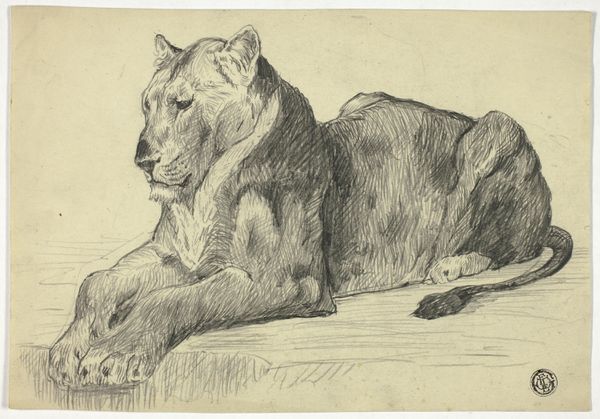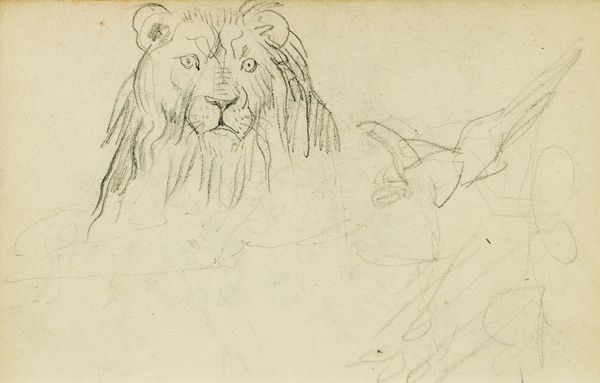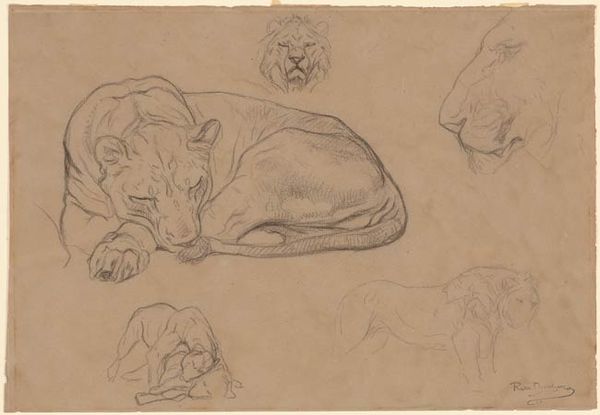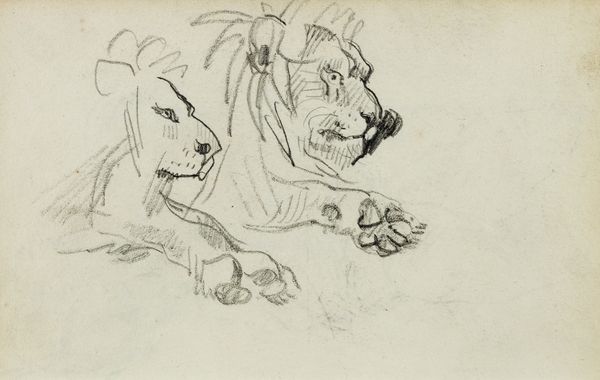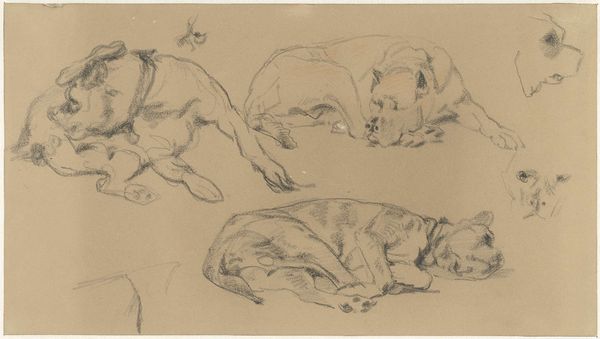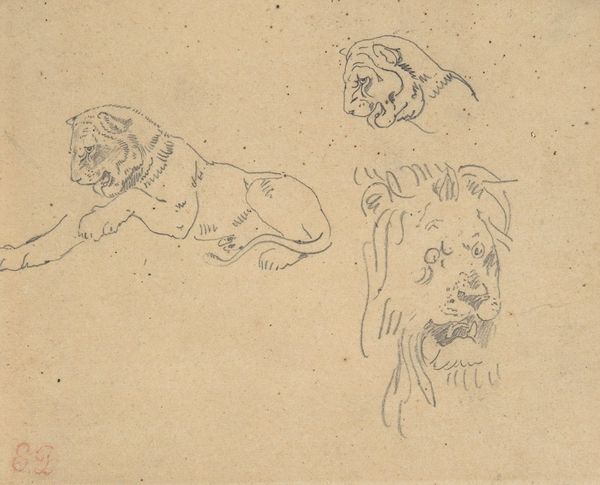
drawing, paper, ink
#
drawing
#
imaginative character sketch
#
quirky sketch
#
landscape
#
figuration
#
paper
#
personal sketchbook
#
ink
#
idea generation sketch
#
sketchwork
#
sketch
#
pen-ink sketch
#
sketchbook drawing
#
sketchbook art
#
fantasy sketch
#
initial sketch
Dimensions: height 145 mm, width 205 mm
Copyright: Rijks Museum: Open Domain
Curator: Today, we’re looking at "Sketches of Lions," an ink drawing on paper by Jan van Essen, dating from around 1864 to 1936. It’s currently held in the Rijksmuseum. Editor: It's striking! There's such a rawness to it. It feels immediate, like we’re peering into the artist's sketchbook as he's rapidly capturing these lions in motion. Curator: Absolutely. The artist’s choice of medium here – simple ink on paper – is so crucial. Ink, in its fluidity, allows for that quick, responsive mark-making, a kind of visual shorthand. This evokes a sense of primal observation, and even reminds me a bit of discussions around the lion as a symbol of colonial power, which van Essen certainly would have been witness to. How do you see that materiality functioning? Editor: The sketch format suggests a preliminary stage, a moment of exploration. He's not presenting a finished, polished idea but rather the process of working things out. And that, I think, speaks to the labor involved. This isn't some divine inspiration—it's the result of study, observation, and working through an idea. The repeated depictions underscore the dedication and investment of time into understanding the subject. How do you think the sketch format informs its contemporary reception? Curator: In our contemporary moment, it allows us to see past idealizations of power and domination. I can’t help but feel that each sketch reveals not only an aspect of the lions themselves but offers multiple perspectives on the relationship between the animals, the artist, and, ultimately, the viewer. There’s something subversive in presenting a multiplicity of interpretations. Editor: I agree; this "working-through" invites viewers to actively engage. Instead of a finished product, they become involved in the production of meaning. And the starkness of the ink foregrounds the sheer amount of visual information our brains take in and then streamline into these outlines. Curator: Precisely. Ultimately, I read the series of studies as revealing the artist’s role in understanding power and perhaps reflecting on the limitations of what he observed. Editor: A fruitful interaction between process and subject matter, allowing us to look at sketching not just as preparation for the final product, but also as a finished, independent work.
Comments
No comments
Be the first to comment and join the conversation on the ultimate creative platform.
